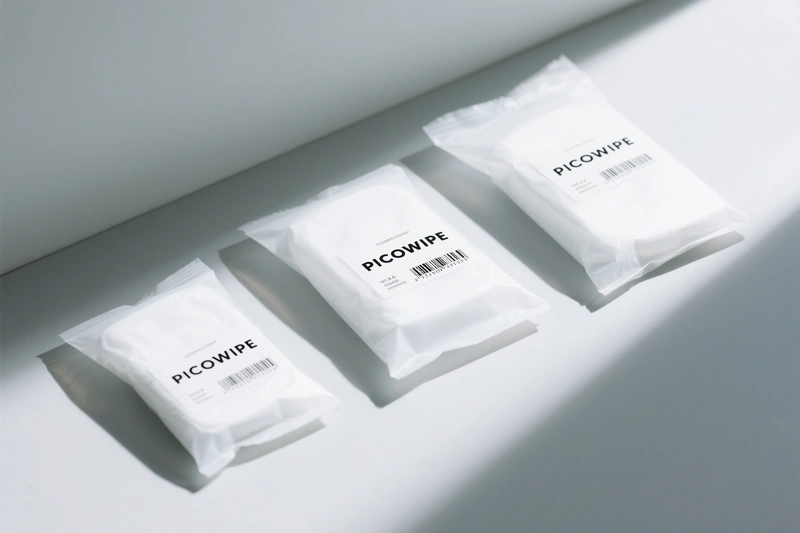By [email protected] — Charting the depths of expertise
Effects of Inconsistent Absorbency
Fluctuating Cleaning Efficiency in Wet Wiping Industries: In sectors reliant on wet wiping, such as electronics manufacturing, medical device cleaning, and precision instrument maintenance, inconsistent absorbency or absorption rates in cleanroom wipes lead to unstable cleaning efficiency. Insufficient absorbency may fail to completely remove liquid contaminants or apply enough cleaning solvent, while a slow absorption rate can hinder operational efficiency. This can result in residual liquids, streaks, or incomplete cleaning, increasing the risk of contamination.
Inaccurate Control of Solvent Usage: It affects the control over the amount of solvent used, potentially causing waste or insufficient application.
Causes of Inconsistent Absorbency
The inconsistency in a cleanroom wipe's absorbency (whether within different areas of the same batch or between different batches) is typically related to the following factors. These factors cause fluctuations in the properties that affect absorbency, such as pore structure, residue content, and surface wettability.
(I) Fluctuations in Raw Materials and Fabric Formation
Fiber Uniformity: Minor variations in the thickness, length, or properties of the fibers constituting the wipe can lead to inconsistent fiber packing and structure across different areas of the fabric.
Unstable Basis Weight/Density Control: During fabric production (e.g., web laying for nonwovens, or density control in woven or knitted fabrics), fluctuations in the material's weight per unit area or compactness can cause variations in the total pore volume or structure, directly impacting liquid absorption capacity.
(II) Inconsistent Control in Post-Treatment and Washing Processes
Washing Uniformity / Residue Control: This is one of the key factors causing inconsistent absorbency. If the cleaning solution circulation is inadequate, temperature is uneven, washing time is insufficient, or rinsing is incomplete, it can lead to uneven levels of hydrophilic residues (like unrinsed antistatic agents) or hydrophobic residues (like processing aids, oils, NVR) in different areas of the wipe. Residual hydrophobic substances can block pores and hinder liquid penetration, reducing absorbency.
Uneven Application of Hydrophilic Agents (if used): If hydrophilic finishing agents are used to enhance absorbency, their uneven application or distribution on the fabric will also cause differences in wettability and absorption performance across various areas.
Inconsistent Drying Process: Uneven drying can affect the final structure of the fabric (e.g., degree of shrinkage) or cause certain residues to concentrate in specific spots.
(III) Fabric Structure and Pore Uniformity
Micro-defects in Weaving/Knitting or Web Formation: Microstructural irregularities that can occur during fabric production, such as localized variations in yarn tension, uneven fiber entanglement, or changes in pore size, can lead to differences in the internal capillary channels and liquid storage capacity in different areas.
Effects of Edge Finishing: Different edge finishing methods (e.g., laser sealing, thermal sealing, knife-cutting) have varying effects on the structure and absorbency of the fabric's edge. Inconsistent treatment can lead to absorbency differences between the edges and the central area.
(IV) Effects of Physical Processing
Uneven Tension in Slitting or Winding: These processes can slightly affect the physical structure of the fabric. If tension is inconsistent, it may cause variations in the fabric's compactness at different locations.
(V) Effects of Storage Environment
If cleanroom wipes are exposed to an environment with volatile organic compounds or other contaminants during storage, these substances can be adsorbed onto the fabric, altering its surface properties. This can lead to inconsistent absorbency, especially if the contamination is not uniform.
In summary, the inconsistency in a cleanroom wipe's absorbency is primarily rooted in any step of the entire production chain—from raw materials to the final product—that can cause non-uniformity in the wipe's physical structure (especially pores) or surface chemistry (especially residues and hydrophilicity). Strict production process control and quality inspection are essential to ensure consistent product absorbency.


